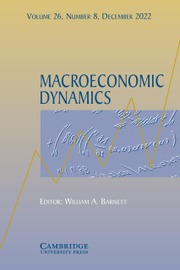Article contents
THE FERTILITY DECLINE IN THE UNITED STATES: SCHOOLING AND INCOME
Published online by Cambridge University Press: 06 February 2017
Abstract
This study investigates the determinants of the fertility transition in the United States from 1850 to the end of the 20th century. We find a robust negative relation between years of schooling and fertility. The magnitude of our baseline estimate suggests that the rise in schooling accounts for about 60% of the US fertility decline. In contrast, we find no evidence of a robust relation between income per capita and fertility. This pattern corroborates theories stressing the importance of human capital investments in generating a transition from high to low fertility.
Information
- Type
- Articles
- Information
- Copyright
- Copyright © Cambridge University Press 2017
Footnotes
We thank an associate editor and two anonymous reviewers for useful comments and suggestions. We also thank Oded Galor, Carl-Johan Dalgaard, Fabrice Murtin, Paul Sharp, and Philipp Ager for useful comments and suggestions. We finally thank Lene Holbæk for editorial assistance. All errors and omissions are our own. This work was supported by a grant from the Danish Research Council Reference No. 0602-02108B to Lars Lønstrup.
References
REFERENCES
- 13
- Cited by

